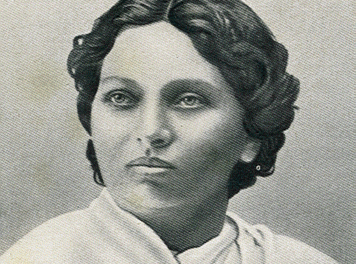
Sivaji (2007), the global Rajni-Mania is the discourse of desire and despair. It presents a case for the Christians for persuasive engagement with popular culture, argues Samuel Thambusamy.
(1) Sivaji – the Boss, the latest Rajnikant extravangza is here and its here to stay. Here’s another opportunity for die-hard Rajni fans to meet their Superstar (after 2 years) and his latest on-screen persona Sivaji – the Boss. Sivaji called for a big release ( in terms of screens and prints) to match both Rajni’s ‘Star power’ and the intensity of Rajni-mania worldwide. It was a 18th month long wait for die-hardRajnikant fans and they erupted into celebration right from the day bookings for the movie were opened. Surprisingly, even national News channels made us believe that Sivaji is the next best thing to happen to the world. Such was the pre-release fanfare for Sivaji.
(2) What is so big about Sivaji? For starters, Sivaji shot at a massive budget of about 80 crores, the film is the most expensive movie ever made till date. But much more than that the film is about Superstar Rajnikant. Rajni is Rajni is Rajni. If you don’t understand this, then you must surely belong to the uninitiated. Rajni-mania is a huge socio-cultural phenomenon in Tamilnadu. Believe me! Rajni mania is not a south-Indian phenomenon any longer. It extends beyond Tamilnadu to US, Canada, Italy, Germany, Japan and South Africa. Now, Rajni-mania is a global phenomenon. After Sivaji’s release, the Rajni-mania has already reached a near hysterical level.
(3) What’s in it anyway? Ask the fans and they’d say, “ Go for it. It’s entertainment guaranteed”. Poor me – I couldn’t manage to grab a ticket. The queues are getting longer at ticket counters despite extra shows across the city. The movie, we are told is already a sell-out for the first three weeks and definitely for people like me Sivaji could only come after a long wait. And so, I decided to surf through movie reviews on the Internet – the world of information at your finger tips. Not surprisingly, ‘Rajini-the superstar’ is everything in the movie. Even the best among its film crew remain mere shadows at best.
(4) Sivaji’s story is pretty simple, straight forward and predictable. But who ever said Indian cinema is about story. Indian cinema, particularly regional cinema has always been (and will always be) about the “hero” who churns out a ‘tried-and-tested’ formula for both entertainment and (socio-cultural) enlightenment. It’s all about the hero’s invincibility as he fights for a just cause. It’s all about romance/love that defies socio-cultural conventions. Most of all, it’s all about a movie experience that provides either a ‘cathartic’ effect and /or fulfillment for the spectatorial aspirations. Sivaji faithfully follows the beaten down track within Tamil cinema – one man’s crusade for self-respect, honour and larger public good. Sivaji is yet another ‘one-man-agent-of- change’ formulaic plot within Tamil Cinema. But what makes Rajni a celebrated superstar for the last 25 years. I suppose, in a Rajni-starer one must stop thinking and just allow the Rajni-experience to slowly envelope you. So wait for your chance to watch Sivaji – it may help you discover the Rajni-mania.
(5) Should an evangelical Christian worry about “ Rajni mania”? I think we must. Our context/s challenge us to “speak” the Christian hope within popular culture. Historically, the Church ( and her related Institutions) has been largely hesitant to engage with popular culture. Douglas Groothius painfully remarks, “ The evangelical world today suffers from apologetic anemia. Despite the fact that Holy Scripture calls believers to give a reason for the hope we have in Christ (1 Peter 3:15; see also Jude 3), we sadly lack a public voice for truth and reason in the marketplace of ideas. We do not have a strong intellectual presence in popular or academic culture”. Douglas’ words are painfully true about the Indian Church (and its related institutions)
(6) Our Christian commitment (and calling) requires us to readily defend our “Christian hope” with reasons( I Pet 3:15). This is the apologetic task for every believer. Historically, our affiliations to traditions of “rationality” have led us to “speak” of ‘rational defense’ (why-we-believe-what-we-believe) rather than ‘defense of Christian hope (our-Christian-hope-makes-sense- and-we-can-show-you-how). Today, popular culture presents (actually promotes) a discourse of ‘desire’ and ‘despair’ and the apologetic task is to speak “Christian hope” within popular culture.
(7) If the apologetic task is to engage in a ‘persuasive’ conversation with contemporary culture – its needs, hurts, tastes and desires, then we must locate a ‘common’ ground from which to speak out the “Christian hope”. Theodore A. Turnau reminds us, /" The truth of Christianity is not just about its rationality, but also about its beauty, goodness, rightness – how Christianity connects with desire. Apologetics must relate the truth of the gospel to human desir
e". We must be willing to locate the hungers of the human heart with the discourse of “desire” and “despair” within popular culture.
(8) Apologetics, if rightly understood, is engaging Christian hope (persuasively) with the discourse of ‘desire’ and ‘despair’ within popular culture. Theodore A. Turnau writes,“ If we understand apologetics as persuasive dialogue, as conversation aimed at swaying human desire, then a robust, relevant apologetics must study popular culture. On the silver screen, or over the airwaves, or in the magazines: that’s where the current shape of desire is laid out for all to see (and for all to buy into)”.It is imperative that we study popular cinema, TV Soaps and magazines etc. David Bruce, who runs the website hollywoodjesus.com, contends, "Being a Christian used to mean you didn't go to Hollywood movies. Now it is seen as a missionary activity".
(9) Sivaji – is another opportunity to understand the discourse of 'desire' and 'despair' within popular culture. On the flip side, it is an opportunity to engage in "persuasive" cultural conversations that make the Christian hope count within a culture of 'desire' and 'despair'. Theodore A Turnau exhorts Christian believers to engage in such persuasive conversations, If a movie or singer or television showbecomes extremely popular (what you could call “of cultural moment”), then the apologist ought to look into it, disentangling the strands of grace and idolatry. In this way, you slowly become educated about the landscape of desire, the inner terrain of these friends with whom you seek to share the true answer to desire.
(10) Ever wondered “why” Rajni-the Super Star connects so well with an inter-generational audience. The Rajni socio-cultural phenomenon has not been taken ‘seriously’ by the church and its related Institutions. The formulaic Rajni movies are nothing more than a discourse of desire – the hungers of the heart and the thirst of the soul. The “Super star” symbolizes the hungers of the human heart for a crusader who would fight for the poor (socially marginalized), penniless (economically deprived) and the powerless ( politically oppressed). The souls of millions thirst for peace – justice and prosperity. This comes so close to the messianic expectations within the biblical paradigm. There is a kind of messianic desire already within the hearts of people and popular culture provides “icons/idols” to satisfy those hungers of the human heart. The popularity of MGR was also because of the constant reel images of a ‘crusader for justice’ that coincided with the spectatorial expectation for a real life ‘crusader for justice’. Indian cinema, at least the regional cinema is all about savior-myths. The adulation for the reel crusader betrays the widespread desire for peace, love and justice ( Kingdom values) and despair about ‘corruption’, ‘conflicts’, ‘poverty’, ‘powerlessness’ and ‘deprivation’ (the public face of evil).
Unfortunately, the reel-crusade against “evil” is a mirage. This explains the need for more and more “repetitive” storylines and “formulaic” plots rather than new stories.
(11) Is ‘Rajni-mania’ – a religious expression? Paul Tillich description of Religion comes handy to understand this frenzy. He describes religion as “ Religion is a state of being grasped by an ultimate concern, a concern which qualifies all other concerns as preliminary and which itself contains the answer to question of meaning of our life.” How is the “ultimate concern” communicated within a visual culture? It is in and through the “popular” and the “cultural” that visions of ‘ultimate concern’ are propagated. Robert K. Johnston, professor of theology and culture at the Fuller Theological Seminary, reminds us: "Film, especially for those under 35, is the medium through which we get our primary stories, our myths, our read on reality”. Cinematic myths permeate our reality and make us engage in meaning-making, patterns forming and significance giving. Thus, Popular culture becomes a religious expression.
(12) If Rajni-mania is a religious expression that arises out of the desire for peace, love and justice and the despair at the reality of evil, then Christian apologetics must engage in persuasive conversations with it. We must present the TRUTH – BEAUTY and GOODNESS of the Christian hope of a new world to come (and defend it too). We must “speak” the Christian hope of a redeemed cosmology wherein evil is both defeated and destroyed within a culture that is strangled by despair.
(13) How do we “speak” – THE CHRISTIAN HOPE – within a culture of ‘desire’ and ‘despair’? We must recognize that the way young people engage and/or disengage with “the world of ideas” has dramatically changed Robert K. Johnson reminds us: “As the culture has moved from a modern to a postmodern era, we have moved from wanting to understand truth rationally to understanding truth as it's embedded in story". Sivaji – has the promise of a ‘fulfillment experience’ and ‘a hope message’ embedded in its story.
As evangelical Christians we know that the answers it brings to the hungers of the heart for Peace – Love – and Justice are ‘illusory’ and ‘escapist’. How we “speak” the Christian hope within the discourse of ‘desire’ and ‘despair’ post-Sivaji is the specific apologetic challenge. Hopefully, we will learn to “speak” our apologetics in stories.
{moscomment}






A Good film review indeed!
Is Mr. Thambusamy a film critic?
Or is he a die hard fan of Rajani?
Very sad.!!!!
Why this waste of precious time and valuable Web Site space?
A Believer in Christ
Hyederabad
Dear Sam Anna,
I appreciate you review which is really good. Keep it up. I think We Christians are against going to cinema theater & talk so much against Cinema but many of us watch in our houses in the TV. I don’t understand why this Hypocrisy. The brother who commented about this read this review and also Commented as a A Good film review indeed! and he tells this as a waste of time. Why did he read this in the first place?
A Good question Mr. V.A,Since It looks like a Christian site I read it, now I feel very sorry about it. Hope you got my point
dear A brother in hyderabad,
Could you kindly elaborate on “waste of precious time and valuable Web Site space”, and why you were “sorry” reading this on a site that “looks” Chrisitan?
Sad to note that you refuse to understand the article.
DEAR SHERRY,
I THINK THERE IS NO NEED OF ELABRATION. THAT WILL AGAIN BE A WASTAGE OF TIME. THE ARTICLE ITSELF IS SELF EXPLANTORY. ANY LAYMAN CAN UNDERSTAND. IF YOU SAY “YOU REFUSE TO UNDERSTND THE ARTICLE, YES, I AM REALLY SORRY I AM STILL REFUSE TO UNDERSTAND. BROTHER,
I DON’T WANT TO MAKE ANY FURTHER ARGUMENT. BYE MAY GOD BLESS.
Dear Bro frm Hyd,
http://www.sakshitimes.com/index.php?option=com_content&task=view&id=143&Itemid=41
Am still on the case, with the comment in the link above.
God bless you too, bro 🙂
Unless we don’t know their social, cultural, spiritual, mental status of the people, we can’t (in general) communicate with these people. We see cinema, not for entertainment but to engage in the conversation. Good Sam Thambusamy and pray that you will be led by Holy Spirit.
As I read the article, I was deeply touched by the apologetic that Sam has offered. Praise God for the insight! Keep up the good work Sam!